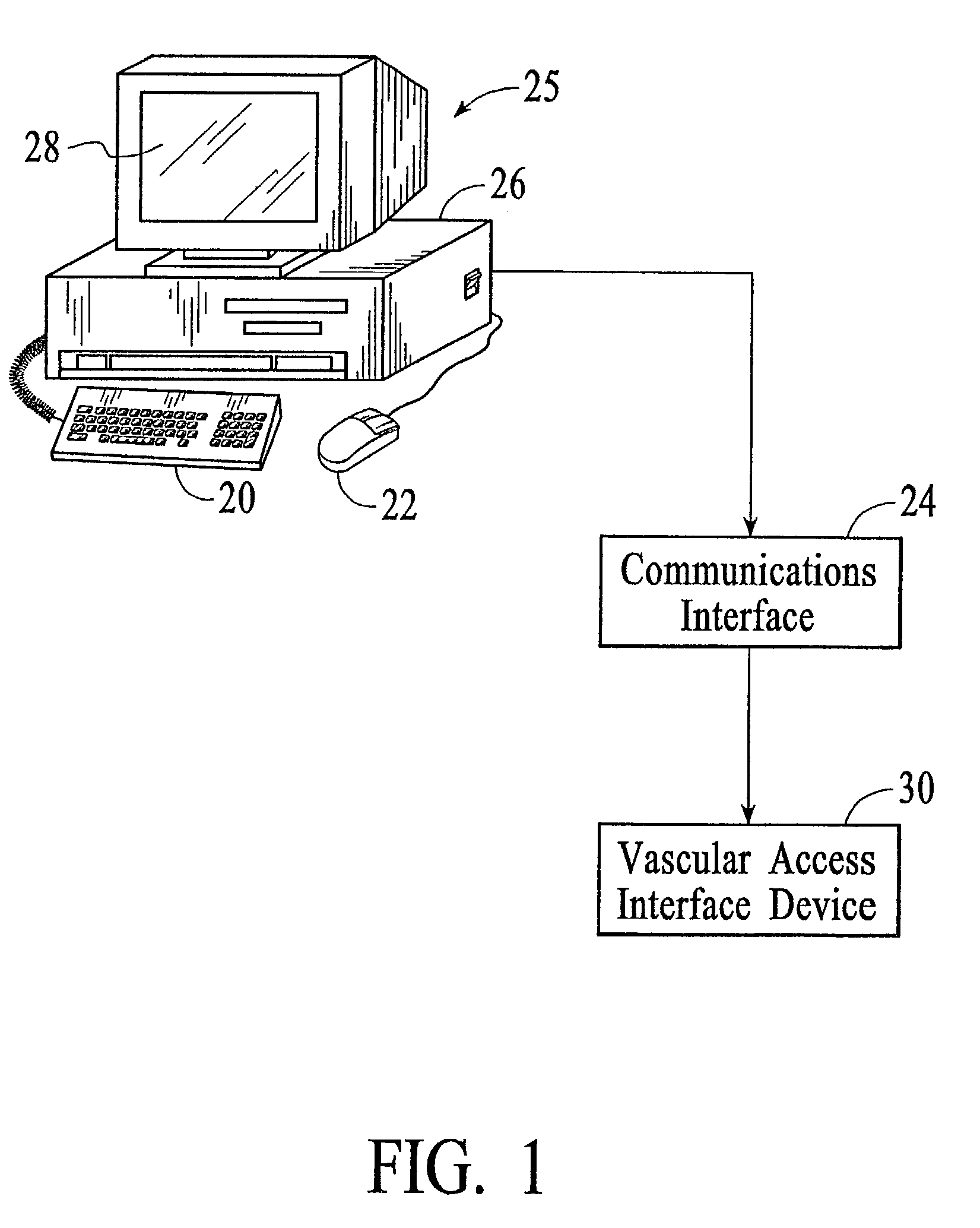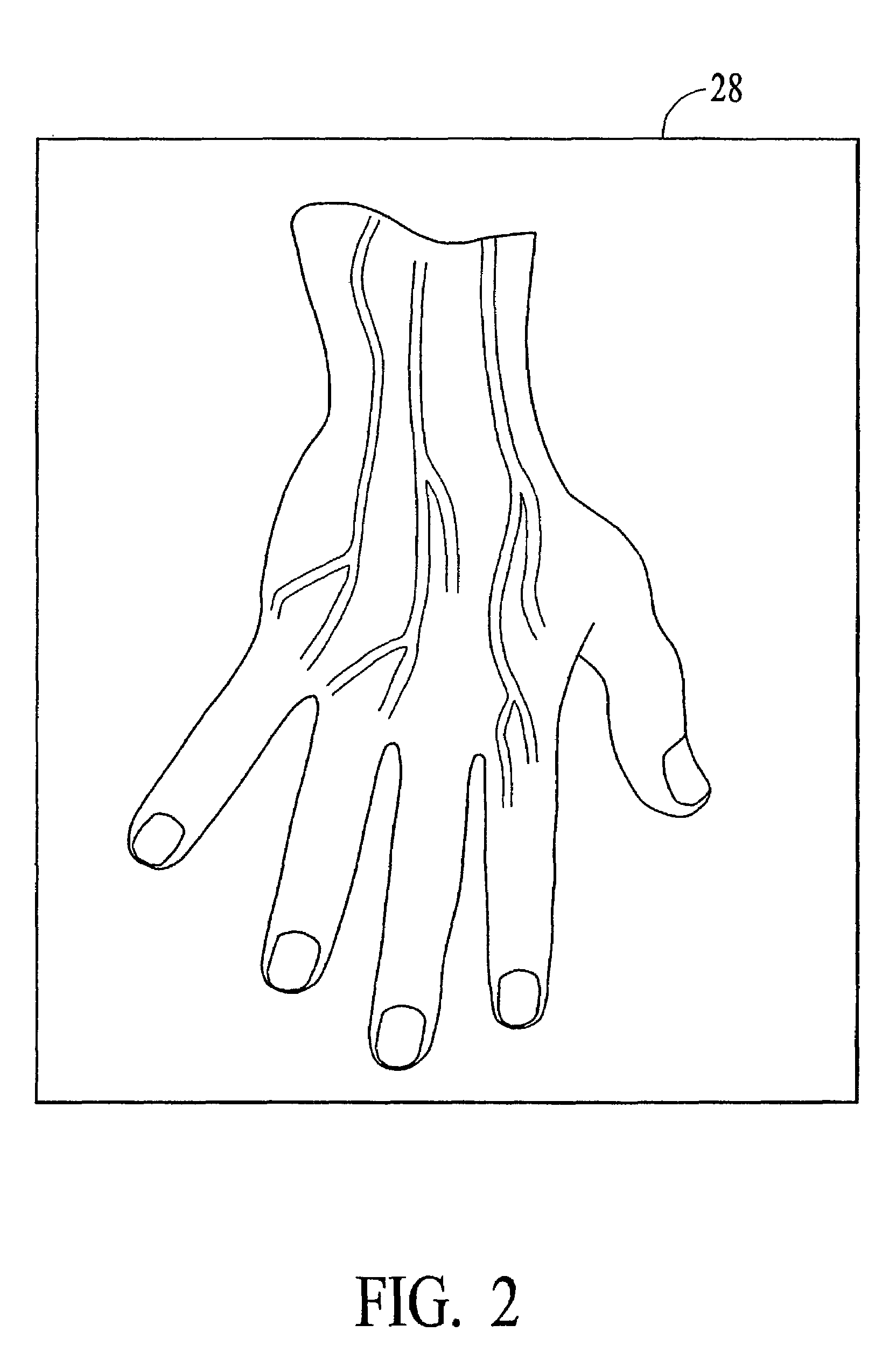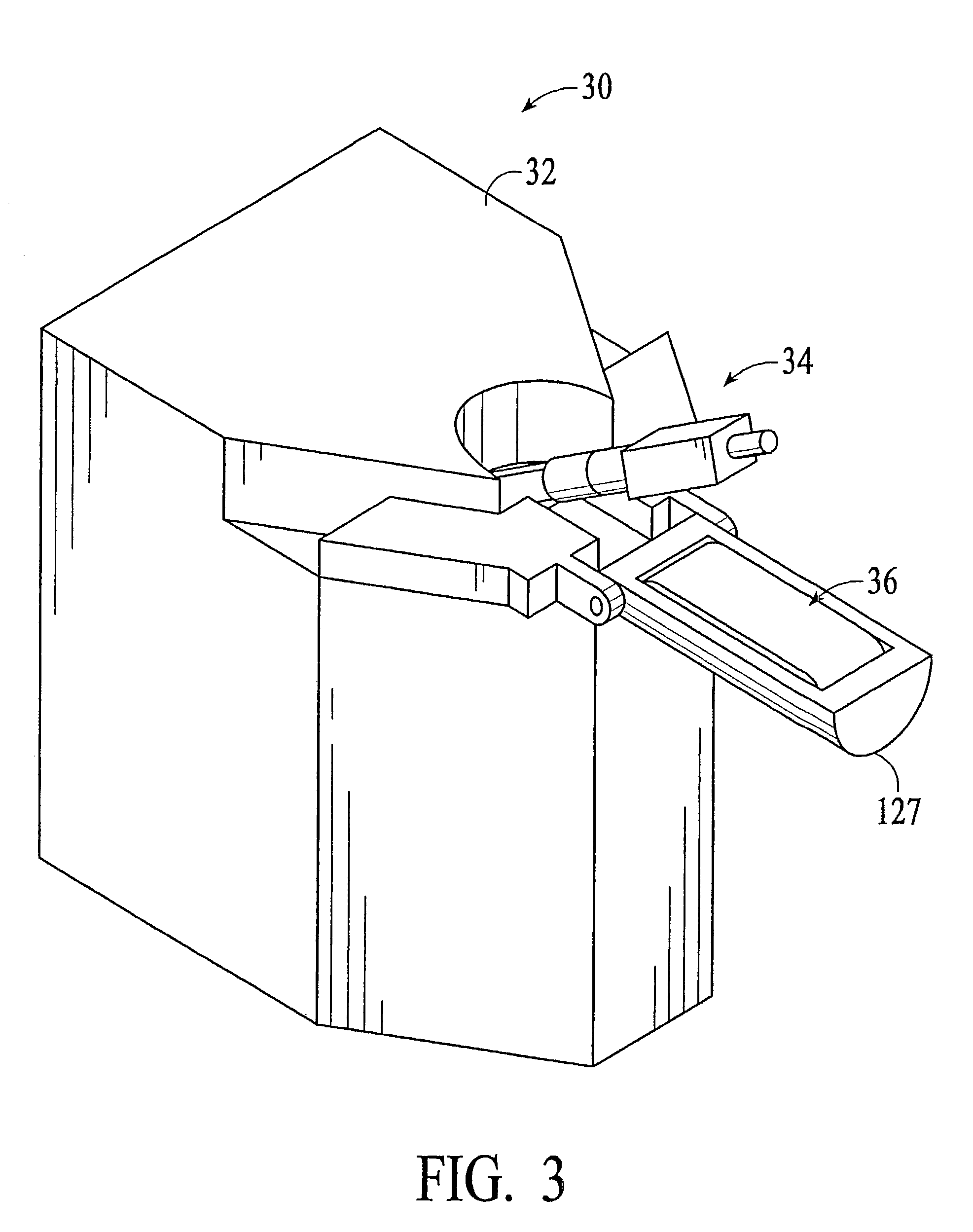Interface device and method for interfacing instruments to vascular access simulation systems
- Summary
- Abstract
- Description
- Claims
- Application Information
AI Technical Summary
Benefits of technology
Problems solved by technology
Method used
Image
Examples
Embodiment Construction
[0034]A vascular access training system for training medical professionals to access veins is illustrated in FIGS. 1-2. The vascular access training system trains medical professionals to access veins in hospital and / or clinical settings for introduction of fluids into and sampling blood from the accessed veins. Basically, the vascular access training system may be utilized to train medical professionals to perform various techniques, such as peripheral vascular access, intravenous catheterization, peripherally inserted central catheter placement and central venous catheterization. Specifically, the vascular access training system includes a computer system 25, an interface device 30 and communications interface 24 for transferring signals between computer system 25 and interface device 30. Computer system 25 includes a monitor 28, base 26 (e.g., including processor(s), memories and accompanying hardware), keyboard 20 and mouse 22, and is typically implemented by a conventional or c...
PUM
 Login to View More
Login to View More Abstract
Description
Claims
Application Information
 Login to View More
Login to View More - R&D
- Intellectual Property
- Life Sciences
- Materials
- Tech Scout
- Unparalleled Data Quality
- Higher Quality Content
- 60% Fewer Hallucinations
Browse by: Latest US Patents, China's latest patents, Technical Efficacy Thesaurus, Application Domain, Technology Topic, Popular Technical Reports.
© 2025 PatSnap. All rights reserved.Legal|Privacy policy|Modern Slavery Act Transparency Statement|Sitemap|About US| Contact US: help@patsnap.com



